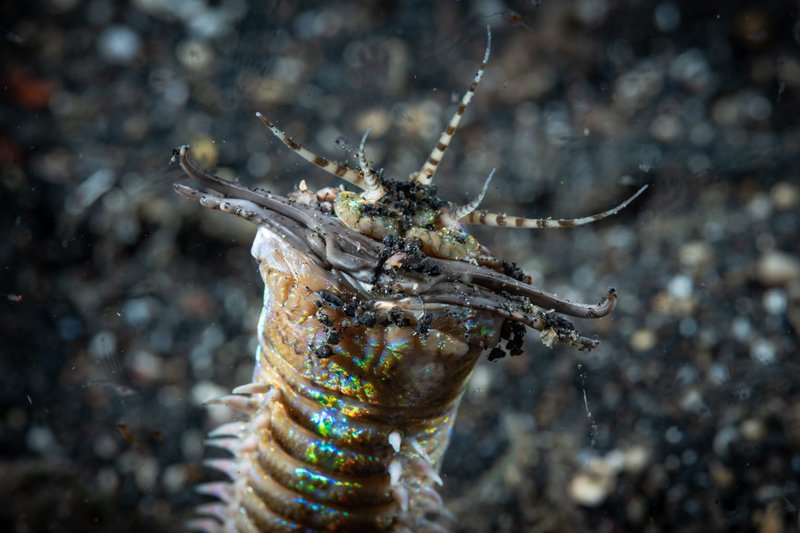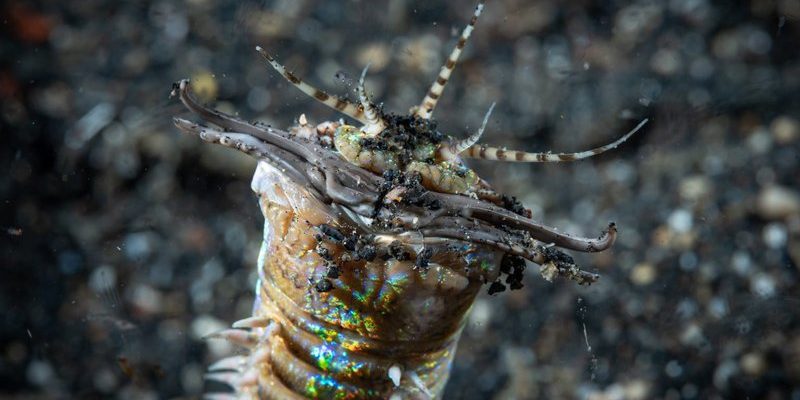
Now, one question that often comes up about bobbit worms is whether they come out during the day. You might be surprised to learn that these intriguing creatures, while active predators, are primarily nocturnal. So, if you were hoping to catch a glimpse of one frolicking in the sunlight, you might need to adjust your expectations. Let’s dive deeper into the world of bobbit worms and explore their habits, habitat, and, of course, their preference for day or night.
What Are Bobbit Worms?
Bobbit worms, scientifically known as *Eunice aphroditois*, are marine polychaete worms. They’re named after the infamous Lorena Bobbitt, who famously cut off her husband’s appendage, which sparks the imagination when thinking about the bobbit worm’s deadly jaws. These worms can be quite large, often reaching lengths of up to ten feet and more. Think of them as nature’s little monster, blending into their environment while waiting patiently for unsuspecting prey.
These creatures mostly inhabit the sandy and muddy substrates of tropical and subtropical waters. They have a unique ability to camouflage themselves, making them nearly invisible to predators and prey alike. This impressive adaptation allows them to launch surprise attacks, grabbing fish or crustaceans with their powerful jaws. So, if you’re ever near a coral reef or lagoon, you might want to keep an eye out—just don’t be too surprised if you don’t see them out during the day.
The Nocturnal Nature of Bobbit Worms
Bobbit worms are *nocturnal*, which means they’re mostly active at night. This behavior is common among many marine species, as they have developed adaptations to thrive in low-light conditions. You might be wondering why they prefer to hunt after the sun goes down. Here’s the thing: hunting at night helps them avoid predators that are more active during the day while also increasing their chances of catching prey that may be venturing out for a late-night snack.
During the day, these worms tend to hide themselves in the sand or mud, relying on their impressive ability to blend in with their surroundings. Imagine a chameleon, expertly changing colors to match its environment—bobbit worms do something quite similar but with texture and color in a more static form. This clever disguise allows them to wait undetected until night falls, when they can unleash their hungry jaws on unsuspecting fish and other small marine creatures.
Do They Ever Come Out During the Day?
While bobbit worms are primarily nocturnal, they aren’t *exclusively* active at night. There can be exceptions where you might catch a glimpse of one during the day, especially in low-light conditions or if they’re disturbed. In some cases, a sudden change in their environment, like water temperature or currents, might prompt them to emerge.
Additionally, if food is scarce, a bobbit worm may take the risk and venture out during daylight hours. But be warned: if you do spot one during the day, consider it a rare treat. And while it might be tempting to try to get closer, keep in mind that their jaw strength can be quite formidable. So, admire from afar!
Bobbit Worms in Aquariums
If you’re an aquarium enthusiast, you may be curious about keeping bobbit worms. They can add a unique dynamic to your underwater environment, but having one in your tank does come with some pros and cons. For starters, bobbit worms can help manage your tank’s ecosystem by feeding on detritus and consuming excess waste. This can keep your tank cleaner and healthier.
However, there are a few things to consider before introducing one to your aquarium. Bobbit worms can grow quite large, and their hunting habits can disrupt the delicate balance of life in your tank. They may also pose a threat to smaller fish or invertebrates. If you decide to house a bobbit worm, be sure to think about tank size and the type of fish you keep. It’s like inviting a new roommate—make sure everyone can coexist peacefully!
Bobbit Worm Behavior and Interaction with the Environment
Bobbit worms have some fascinating behaviors, especially regarding how they interact with their surroundings. They spend much of their time hidden, with only their anterior segments exposed, which allows them to sense movement in the water. As predator and prey, this waiting game is crucial for survival. This adaptation makes them expert ambush hunters.
When they detect potential prey, they can extend their bodies quickly, grabbing their meal with those powerful jaws and dragging it back to their burrow. Their hunting strategy involves a lot of patience—almost like waiting for the right moment to strike in a game of hide and seek. If you’ve ever tried to catch a glimpse of wildlife in nature, you’ll understand this stealthy approach. It’s about being in the right place at the right time.
Besides hunting, bobbit worms contribute to their environment by aerating the substrate as they burrow. This activity helps maintain healthy water quality, making them significant players in the ecosystem. Think of them as nature’s little gardeners, digging around and promoting a balanced environment.
Bobbit worms are fascinating creatures that showcase the wonders of marine life, especially in the depths of our oceans. While they prefer to operate under the cover of darkness, they offer us a glimpse into a world of stealth and cunning. So, if you’re ever curious about these unique marine polychaetes, remember that patience is key. Respect their nocturnal nature, and maybe, just maybe, you might catch a rare daytime sighting.
Understanding the behavior of bobbit worms not only enhances our appreciation for marine ecosystems but also reminds us of the intricate webs of life that exist beneath the surface. Whether you’re a deep-sea diver, an aquarium lover, or just someone intrigued by the mysteries of the ocean, bobbit worms are certainly worth exploring—even if they prefer to keep their activities under the stars.

